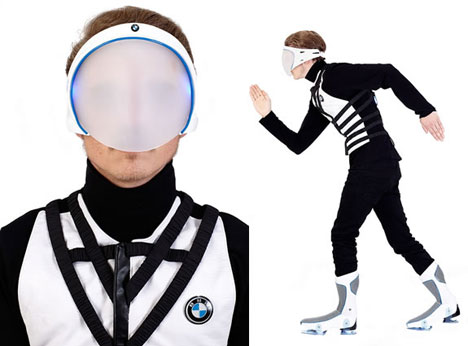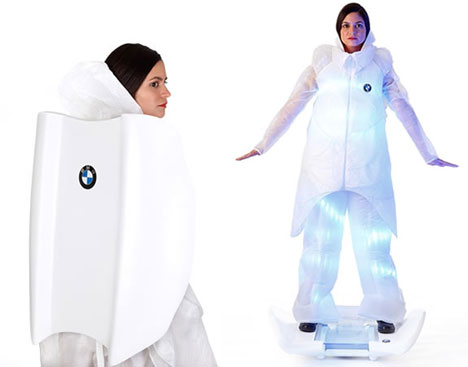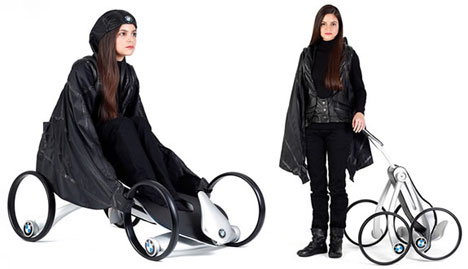![P90068875.jpg]()
This is the final entry of a series of Q+As contributor Tamara Warren conducted with designers from the NAIAS 2011 show.
Adrian Van Hooydonk is head of BMW Design Group. He was responsible for the new 6-Series Cabriolet, the 1-Series M Coupe and the MINI Paceman concept on display at the North American International Auto Show. Hooydonk speaks to the future of design, which he says will include lightweight materials, sustainable materials and well-designed user interfaces.
C77: Is it more difficult to work with lighter-weight materials?
Adrian Van Hooydonk: Actually, no we find new materials very inspiring. Carbon fiber is a material that allows you to do any shape you would like. If you look at racing cars, they have very complex shapes, so it's possible with carbon fiber. In that sense, there was no restraint. The only thing with carbon fiber is that it's lighter than steel. To get the same stiffness you need a cross section that is bigger than on a steel beam. It's more an engineering problem than a design problem. For us in design, it was not that difficult.
It opened up new possibilities then?
Yes, it did. But we're used to working with different materials. For example on the 6-series if you look at the exterior we were working with aluminum, steel, and plastic all in the same body shape. When you work with three different materials in one car that is more of a challenge for a designer. Because each of these materials has different properties and allows you to create different types of shapes or different types of radii, as a designer you have to think a little bit harder about how to make sure this becomes something that looks like one car even though we use these different materials. We're using these different materials to make sure that the weight distribution of the car is right. In the interior we use many different types of materials all the time. In fact, we're constantly looking for new materials. BMW is one of the first and the only cars that use bamboo in a car interior as a new type of wood. It is actually very sustainable, because it grows very quickly.
You mention mobile technology, are you looking for people who have that kind of background for the design studio?
We draw people out of other businesses for sure. Almost every product in the future will have a user interface, a screen that allows you to interact with the product. We can draw from people from other industries, and we are. But we also always have to be aware that our car is a mobile environment. There is the aspect of driver distraction that we want to be aware of so our challenge is greater than a designer for a mobile phone.
Another trend is that luxury is in the detail. We operate in a segment that is highly competitive and our customers are well informed about what makes the product good or luxurious, both in the exterior and interior. Our current designs are thought of in much greater detail. If you look at a headlamp now, compared to 20 years ago, it's a different world. Today a headlamp consists of 60 pieces. The same is true for interiors. Every little detail is designed to a much higher level than it used to be. It gives us a bit more work to do, but in the end it becomes a far more pleasing.
[Ed: For more on BMW design culture, check out this video interview with Chris Bangle, former BMW Chief of Design!]
Tamara Warren, a Motor City native, is co-founder/editor of the car and culture blog Gotryke.com. Her articles have appeared in over 80 publications covering culture, music, the arts, automobiles and design. She has written for The New York Times, Rolling Stone, Delta Sky, Nylon, Vibe, Automobile and Forbes Autos. Check out her work and Gotryke.com and her clips on Tamarawarren.com.
(more...)
![]()
![]()











 Matthew Carter's Walker
Matthew Carter's Walker Schwab/Panther SP7 Tables
Schwab/Panther SP7 Tables






























 Her studies at PSU (BA), the Fashion Institute of Technology and Tech De Montteray in Guadelejara, Mexico alongside experiences as a florist, back-up dancer, costume designer, production assistant and seamstress are prevalent in her craft. Much of her esthetic draws from eclectic classical costume jewelry, specifically from her ancestors' long career in the Mexican Circus. Her grandmother, Auflelia Cardenas, who's crippling tightrope accident ended her career as a circus performer, designed and created costumes for the Mexican Circus thus passing on her craft to her grand daughter, Coco. Inspired by her family's heritage of versatile Mexican Circus performers including equestrians, acrobats, jugglers, and tightrope walkers, Coco skillfully combines and expresses their essence of adventure and discipline with her vast appreciation and knowledge of modern designs and fashion. As a result, she successfully merges costume jewelry esthetics with classical and modern eras by using contemporary mediums and techniques.
Her studies at PSU (BA), the Fashion Institute of Technology and Tech De Montteray in Guadelejara, Mexico alongside experiences as a florist, back-up dancer, costume designer, production assistant and seamstress are prevalent in her craft. Much of her esthetic draws from eclectic classical costume jewelry, specifically from her ancestors' long career in the Mexican Circus. Her grandmother, Auflelia Cardenas, who's crippling tightrope accident ended her career as a circus performer, designed and created costumes for the Mexican Circus thus passing on her craft to her grand daughter, Coco. Inspired by her family's heritage of versatile Mexican Circus performers including equestrians, acrobats, jugglers, and tightrope walkers, Coco skillfully combines and expresses their essence of adventure and discipline with her vast appreciation and knowledge of modern designs and fashion. As a result, she successfully merges costume jewelry esthetics with classical and modern eras by using contemporary mediums and techniques.








